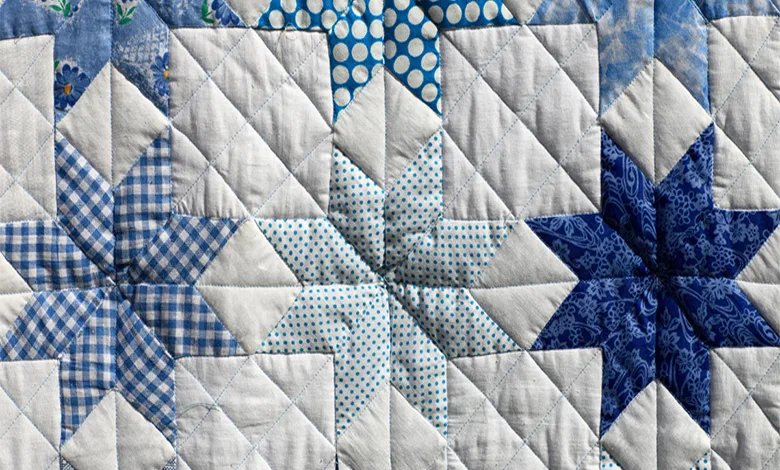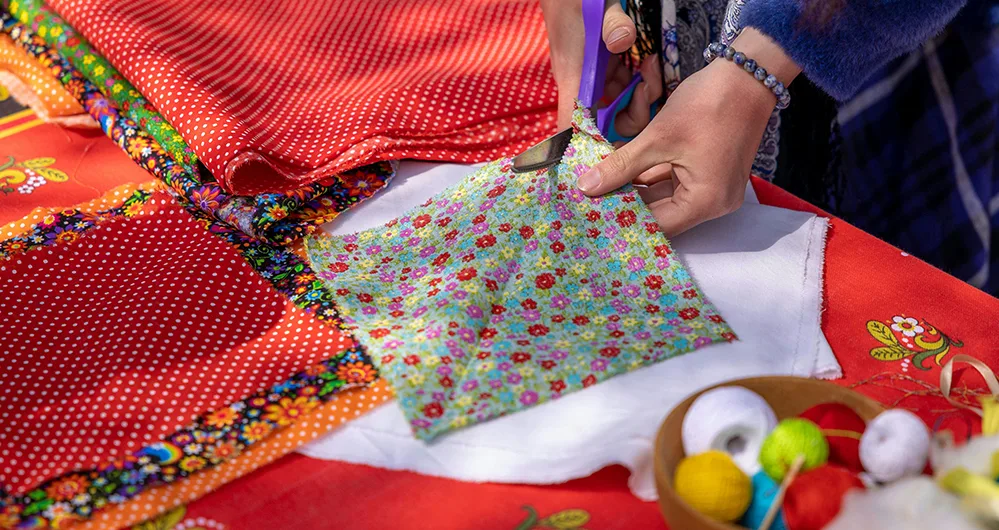4 Creative Techniques for Unique Quilting Patterns

Transform traditional quilt patterns into unique masterpieces with these creative techniques. Perfect for quilters looking to add a personal touch to their work.
Creating unique quilt designs that stand out from traditional patterns doesn’t require years of advanced quilting experience. Whether you’re working with classic Log Cabin blocks, Double Wedding Ring patterns, or exploring modern quilting techniques, these four creative approaches will help transform any traditional quilt pattern into a distinctive masterpiece that reflects your style.
If you’re looking to make your quilt design more unique while honoring quilting traditions, you’ve come to the right place. Quilting has captured hearts for centuries, and now is a great time to add your personal touch to this timeless craft. Whether you’ve been quilting for decades or just recently started with your first rotary cutter, these proven techniques will help you create something truly spectacular without reinventing the wheel.
How to mix traditional quilt patterns with modern design elements
The best way to create unique quilts is to start with a classic pattern you love, then add contemporary twists that reflect your personality. Take the beloved Log Cabin block—a pattern that helped enslaved people navigate the Underground Railroad in the 1800s. Instead of using traditional browns and golds, try bold neons or soft pastels that speak to modern color trends. You can arrange the blocks in an unexpected layout or vary their sizes within the same quilt to create a dramatic visual impact.
The Double Wedding Ring pattern offers another perfect canvas for creativity. This Depression-era favorite traditionally used scraps and muted tones, but you can reimagine it with batik fabrics or a monochromatic color scheme that creates stunning visual depth. When you’re ready to try something different, consider rotating the traditional orientation or creating asymmetrical arrangements that challenge expectations.
Essential tools for this technique include precision rotary cutters, quilting rulers for accurate measurements, and design software like EQ8 for pattern planning. This modernization approach typically takes 2-3 hours of planning before cutting begins, but the results are worth the investment.
Creative quilt sizing: using scale and proportion for visual impact
What makes a quilt design stand out from others? Often, it’s the unexpected use of scale that catches the eye and creates lasting impact. Playing with scale can produce dramatic results that transform familiar patterns into conversation pieces.
Take a delicate pattern typically used for miniature quilts and enlarge it to king-size proportions. Experienced quilters recommend starting with 2-inch blocks and increasing them to 8 or 12 inches for maximum impact. The intricate details become bold statements that attract attention and create a significantly different visual experience. This technique works particularly well with traditional star patterns or complex appliqué designs, though quilting communities advise allowing 20% extra fabric when scaling up to account for cutting waste.
Conversely, reduce a traditionally large pattern for charming results. Many quilters find success by shrinking standard 12-inch blocks to 3 or 4-inch variations scattered across their design. A large star quilt becomes charming when made with tiny blocks, but note that precise cutting becomes essential at smaller sizes. Use fabric die-cutting techniques to ensure accuracy, as hand-cutting pieces under 4 inches often causes size inconsistencies. This method is ideal for intermediate quilters looking to challenge their skills while creating something visually stunning.
Unique quilt color schemes: bold combinations that make designs pop
Color choices can make or break your quilt’s uniqueness, and stepping away from predictable color wheels often yields the most striking results. Trust your instincts when exploring unconventional combinations. That lime green and deep purple pairing might seem unusual, but it could create exactly the pop your design needs to stand out in a show or gallery.
For quilters who prefer subtlety, consider monochromatic schemes using different textures and values of the same color. A quilt made entirely of blues—from powder to navy—creates sophisticated depth without relying on contrasting colors. This approach works beautifully with modern quilting techniques and appeals to contemporary interior design trends.
The key to successful color experimentation is understanding how colors interact with one another across different lighting conditions. Test your fabric combinations in both natural and artificial light before committing to large quantities. Many successful quilters keep a color journal with fabric swatches to track combinations that work well together.
Adding personal stories and meaningful elements to your quilt design
The most meaningful quilts tell stories that resonate with both the maker and the viewer. Incorporate fabrics that hold significance: pieces from your children’s outgrown clothes, vintage scarves from your travels, or fabrics that remind you of special people in your life. These personal touches create emotional connections that make your quilt truly one-of-a-kind.
During the Civil War, quilters often included patriotic symbols and meaningful motifs in their work. You can continue this tradition by adding elements that reflect your interests, hobbies, or family history. Embroider important dates, include appliqué shapes that represent your passions, or use fabric printing to add family photos to your blocks.
Consider making a memory quilt that features important life moments or add symbols that show your cultural background. These personal touches not only make your quilt unique but also turn it into a family heirloom that future generations will cherish for its stories and beauty.

Frequently asked questions about unique quilt design
Q: What makes a quilt design truly unique?
A: A unique quilt design combines unexpected elements like unconventional color schemes, varied scales, personal storytelling elements, and creative interpretations of traditional patterns. The key is balancing innovation with respect for quilting traditions.
Q: How can beginners create unique quilts without advanced skills?
A: Start with simple techniques like color substitution in traditional patterns, adding personal fabric choices, or changing the scale of familiar blocks. Focus on one creative element at a time rather than trying to innovate in every aspect.
Q: What are the easiest ways to modernize traditional quilt patterns?
A: Update color palettes with contemporary hues, mix different block sizes within the same quilt, use modern fabrics like batiks or shot cottons, or arrange traditional blocks in non-traditional layouts like asymmetrical designs.
Q: How long does it take to plan a unique quilt design?
A: Planning usually takes 2-4 hours, depending on complexity. This includes selecting your base pattern, choosing fabrics, planning any necessary modifications, and creating a layout. Investing time in planning saves hours during the construction process.
Q: What tools help create unique quilt designs?
A: Essential tools include design software (EQ8), graph paper for sketching, a design wall for layout planning, and a camera to document different arrangements. Many quilters also use apps for color matching and fabric inventory.
Ready to create your masterpiece?
Your unique quilt design awaits, and you have everything you need to bring it to life. Start with one technique that excites you most, then build from there. Remember, every master quilter started with a single stitch and a willingness to try something new.
When you’re ready to begin, choose your base pattern and identify which of these four techniques resonates most with your creative vision. Whether you’re drawn to bold color experiments or meaningful personal storytelling, the most important step is to start creating.
The joy of creating with your hands is unmatched. Explore other creative hobbies that satisfy your artistic side and let your imagination soar! From quilting to woodworking—the crafting world is your oyster.





